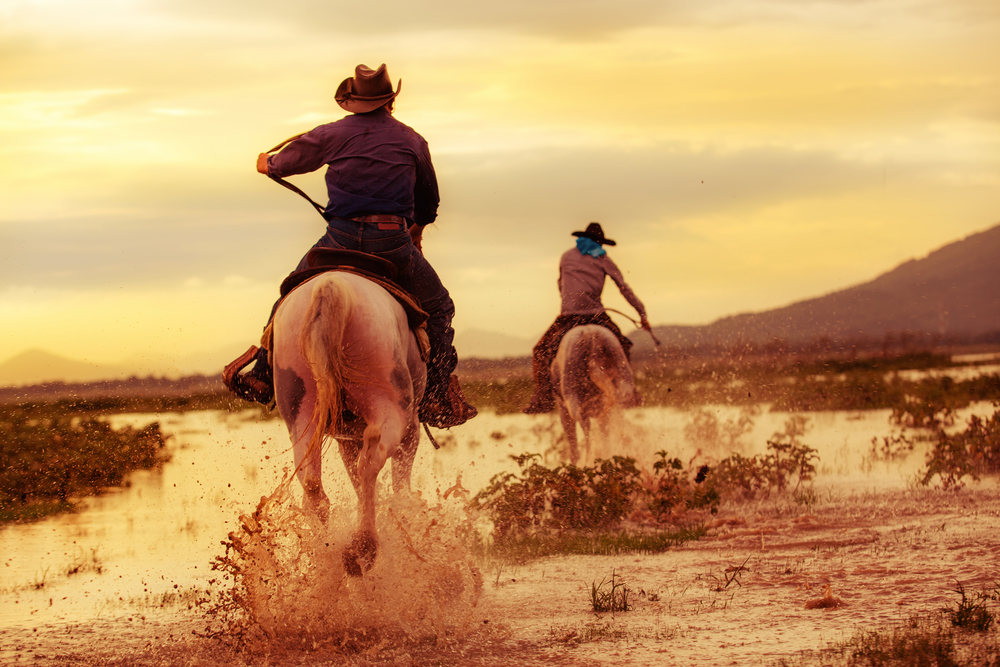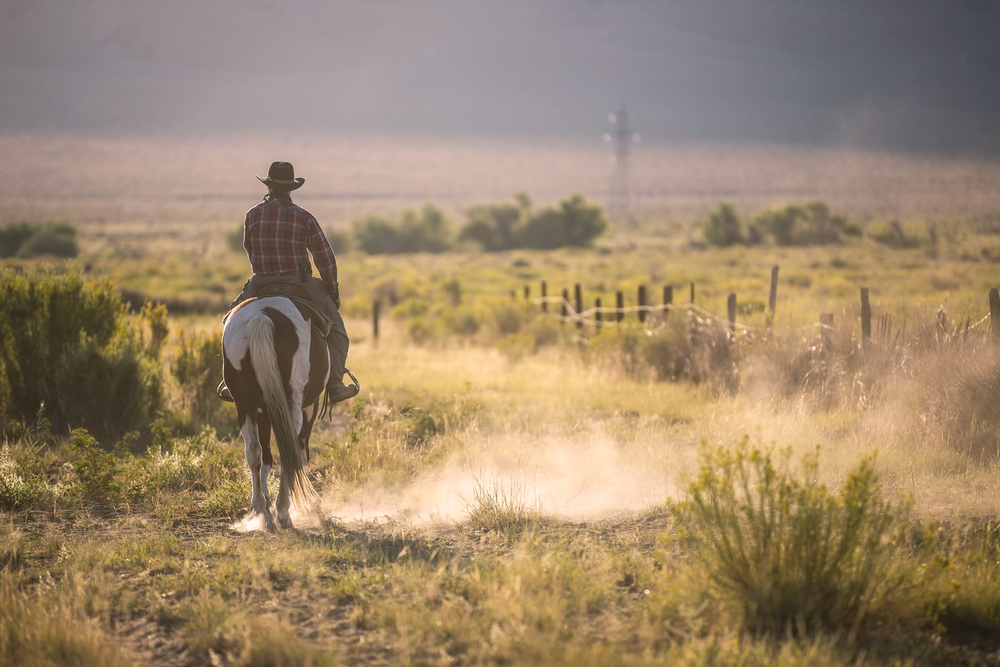American Cowboy Adventures
Life on the Cattle Drive: Modern-Day Cowboys
When the average person thinks about cowboys, they probably think of 19th-century Western saloons, tumbleweeds, horses and the like. The image of American cowboy adventures, machismo, and cultural relevance was a strongly romanticized theme throughout the 20th century, but many people don’t realize that the culture of cowboys and cattle drives is still alive and well today.
Cowboy culture is perhaps not thriving in the same way due to the advancements in technology and adjustments to the culture, but cattle drives still remain a necessary part of ranch life even today. Here’s a glimpse as to what life on the cattle drive is like for the remaining modern-day cowboys, and you might not be too surprised to learn that they don’t contain many of the same aspects as the typical Western cowboy adventures that you may automatically associate with cowboy cattle drives.
Depending on the ranch, you could find traditional cowboys who drive cattle while riding horses or farmhands who drive cattle riding an ATV. The choice to remain old-fashioned in some aspects of everyday life is a deliberate one made by ranchers who feel a strong connection to the old roots of the cattle market.
The cowboys who roamed alone across the pains in the hopes of finding better pasture or a more successful market represent many of America’s deepest ideals – for instance, that success has to be earned through hard work. However, technological advancements that changed the farming industry forever have had profound effects on the lives of cowboys.
Gone are the days of solo horseback adventures across the plains. Those have been replaced by barbed wire, electronic communication including smartphones, and gas-fueled tractors. Those who decide to forgo this kind of modernization do so because they see more value in the simpler ways of life that are long gone.
Today, designated fenced-off feedlots have replaced the open expanses of prairie. This was implicated in an attempt to prevent the overgrazing that had environmentally ruined many of the grasslands and open plains. Another major difference unique to modern cattle drives is that most ranchers simply use trucks to transport cattle rather than leading or roping them from horseback.
Notes regarding market prices, trends, and directions can be tracked on computer programs rather than leather-bound notebooks or papers tacked to the wall of a rustic wood cabin. Flashy four-wheelers and luxury pickup trucks have replaced the experience of breeding and breaking in horses, and iconic brand-name “cowboy boots” are most often worn simply for show or the sake of honoring tradition rather than to provide true foot support.
Many older ranchers tend to agree that when they were growing up they were more than excited to start learning the ropes (pun intended) of being a “real” traditional cowboy, so today, there is often a tangible disconnect between the things that modern cowboys saw and learned as young children and the way they actually work on the cattle drives today. It’s not for nothing that the image of the adventurous, hard-working cowboy captivated the public.
Back in the 19th century, the sharp spurs, rugged lasso rope, brimmed hat, and of course, guns including pistol and rifle, were not only attractive but functionally necessary. The cowboy was – perhaps still is – the true epitome of dedication to duty, bravery, and strength.
Taking care of cattle was hard, grueling work. These brave men would face quicksand, desert droughts, the burning sun, and rushing rivers, all for the sake of saving their herd. Alcohol was not usually allowed on the drive itself, and so-called “cow towns” sprang up along popular drives to provide liquor and lodging for the exhausted men.
The truth is that authentic cattle drives fizzled out around the early or mid 20th century, after railroads had been constructed and successfully connected most of the continental United States. Additionally, with the industrial expansion occurring all over the nation, butcher shops and meat packing plants were built nearer to ranches, so long, treacherous cattle drives to rail stations became unnecessary.
Smaller cattle drives continued for a while, and even today, still exist in the sense that cattles needed to be rounded up within the boundary of a certain ranch in order to move them from one pasture to another.
Today, where more traditional cattle drives occur in the Midwest and Southwest, many of the ranchers have turned them into something of a tourist attraction. In many places, cattle drives have taken on something of a symbolic meaning. Certain events hosted by organizations incorporate cattle drives in a deliberate move to promote the traditional Western lifestyle.
For instance, sponsored cattle drives are often used as fundraisers for college scholarships or internship opportunities, with the Great Montana Centennial Cattle Drive featuring more than two thousand people, two hundred wagons, and nearly three hundred cattle traveling over 50 miles in six days!
Other working ranches invite guests to participate in the transportation of cattle from one feeding lot to the next on a smaller scale, perhaps a two-day or three-day run to act as a hands-on educational experience while also raising money to support the ranch.


